These sight word activity pages are interactive, hands-on, AND require learners to apply the word into writing a sentence – a BONUS!

As I’ve been working with my Kindergartner through Learn to Read, I realized I wanted to stretch her a little more in her sight word knowledge. The curriculum has sight word activity pages, but I wanted some that required her to apply the word into writing a sentence.
So, I created 48 sight word activity pages that correspond with Learn to Read. I’m sharing those with you for FREE today!
**These sight word pages are subscriber freebies. If you’re already a subscriber, login here. The updated password is in your MOST CURRENT newsletter! If you’re not a subscriber, you can subscribe here.**
I got so excited after using these sight word worksheets with my Kindergartner that I created sight word pages for ALL the Dolch Words and Fry’s first 100 and second 100 words!
Sight Word Activity Pages
On each page, learners are asked to 1- read the sight word, then 2- find and circle only the correctly spelled sight words.
Then they are asked to 3-build the word.
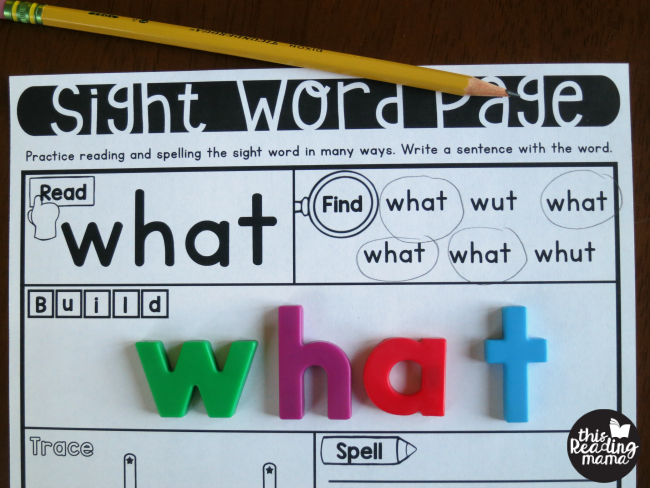
This can be done with magnetic letters,
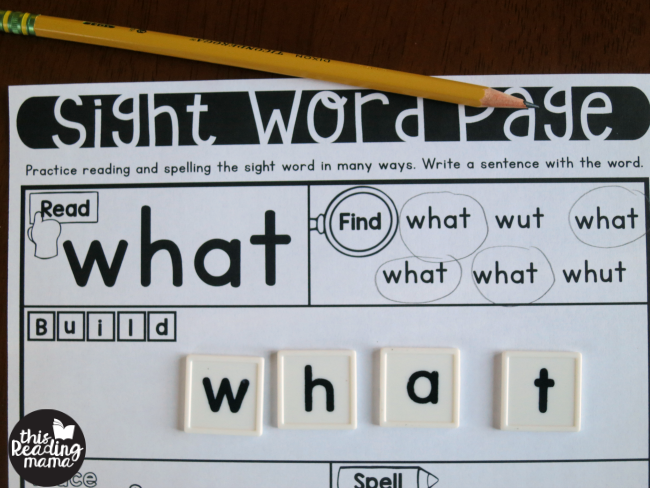
with letter tiles,
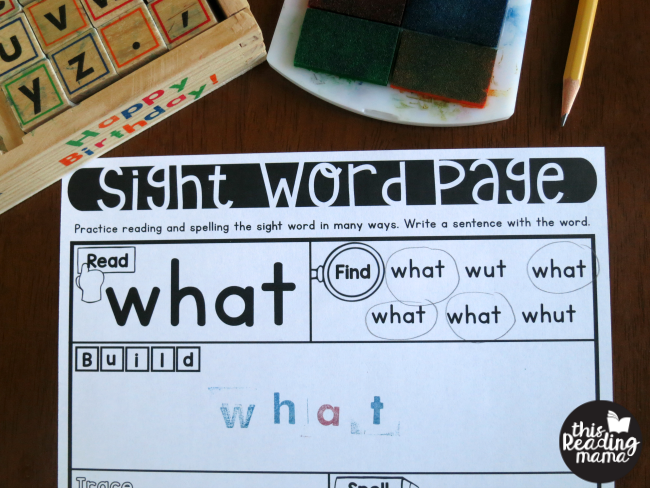
with letter stamps, or any other hands-on manipulative you have.
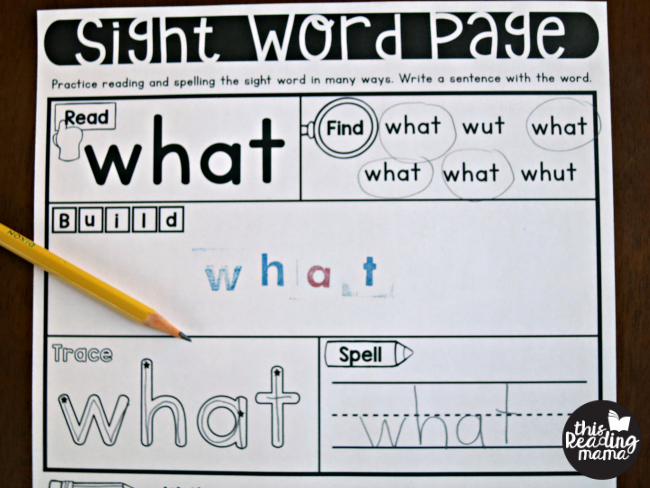
After building, learners 4- trace the sight word {with guided support on the first stroke}, and 5- spell the sight word on lines. {In all the Dolch packs and Fry packs, there are also single line options for spelling each sight word.}
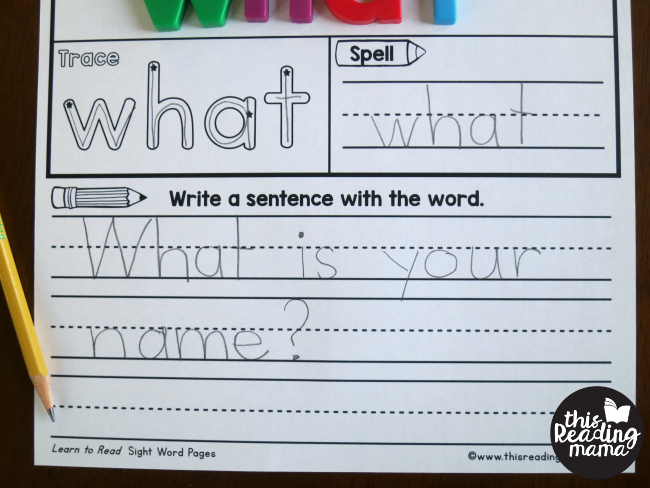
And then comes my favorite part of the sight word activity page. Learners now APPLY their word knowledge to 6- write a sentence with the sight word*.
This is my favorite part for two main reasons.
1- Learners have to know what the word says to be able to apply it to a sentence. If all learners are doing is tracing, cutting, pasting, building, and finding, they may not even know what the word is! If they have to write it in a sentence, they need to know what the word says!
2- They are applying the word to real writing, a step often overlooked by educators of young learners. {Some curricula even teaches that learners shouldn’t be writing until they know how to spell all the words correctly, ignoring the importance and research behind invented spelling.}
Now, there are several different ways you can handle writing the sentence with young learners. You can really differentiate this step for your learners.
Learners can:
- write the sentence themselves {allowing for invented spellings},
- dictate it to you and you write it,
- copy it from a sentence you create together {you write it down on another page and they copy it to this page},
- write it with you {sharing the pencil},
- or any combination of these.
*A Quick Tip: Asking learners to write the sight word activity pages can make them not so independent for some of our learners. And that stinks, right? I have my Kindergartner complete the top part of the page by herself. At a later time, we do the writing part together. But again, some learners will want to do the entire page themselves.
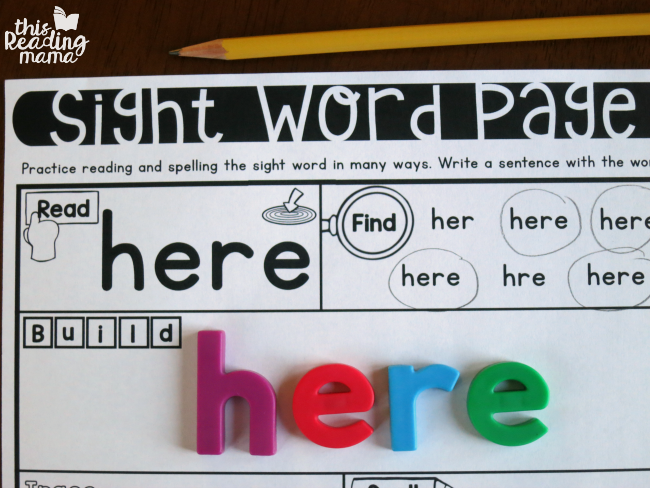
Within the pages, there are bound to be homophones (words that sound the same, but mean something different). To help learners know which word meaning they need to use in their writing, a picture is included at the top of the page in the “Read” section.
Ready to grab the sight word freebies? Click on the image below!
Readers LOVE our Sight Word Sentence Cards!
Enjoy teaching!
~Becky
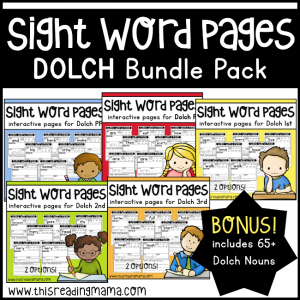
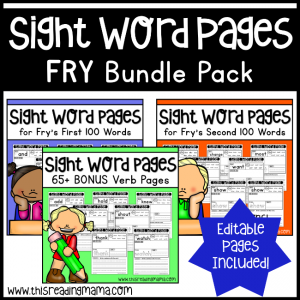
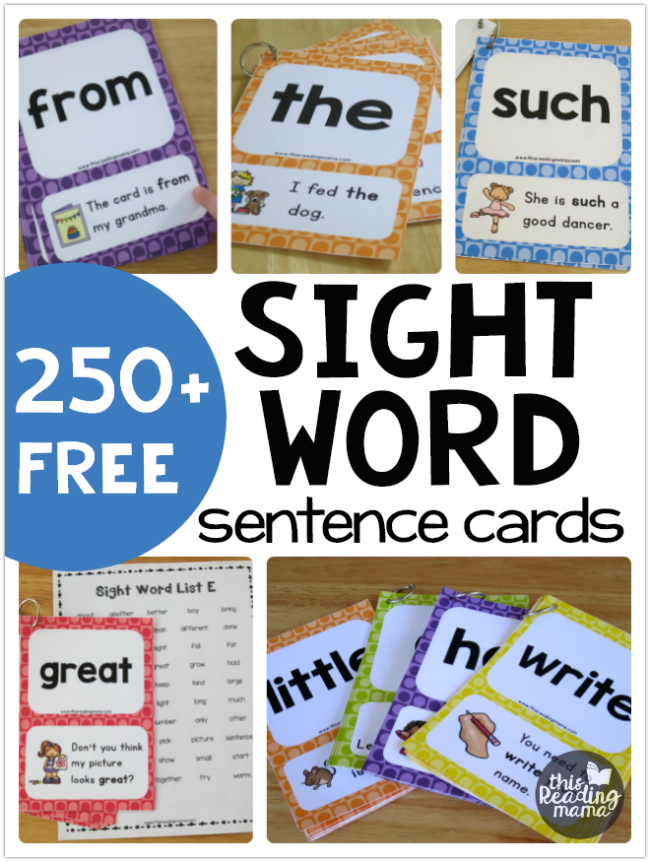
Becky,
Thank you SO MUCH for all the wonderful resources you create. They are so helpful for use with my Kindergarten students. I love the way you have your resources so organized in a way that makes it easy for me to find just what I need when teaching specific skills. Your blog is easy to navigate, too. Thanks for all you do and share!
Angela Whipple
Awesome! Glad to hear you can use the things you find here with your Kindergarten students. Also thankful to hear that the blog is easy to navigate. That’s getting harder and harder to do as more resources are added. 🙂
Hi! I love your products and thank you so much for sharing as you do! I just feel the need to comment on the font used for the heading “Sight Word Page.” My students come from homes where the primary languages spoken/read/written are not English – in fact they don’t even use the same alphabet system! We have to spend a lot of time with letter formation and line placement (tall letters and those that fall below the line). So when I see that font, I cringe! Believe me, as a crafter, I love it, but as a primary grades teacher, I avoid it Thanks for readng! Keep up the great work! Gratefully, Shari
You make a great point here. That’s why I didn’t use that font within the activities themselves.
If you think it could confuse your learners, take a moment to explicitly explain author’s craft. It’s the same with sentence structure. How many times have I explained complete sentences and then turn to a favorite author and see incomplete sentences? It’s all about the author’s craft. 🙂
Thanks for sharing your resources. As a parent it helps me target areas that my daughter is having trouble with and know what might help her. I am so looking forward to using these with her.